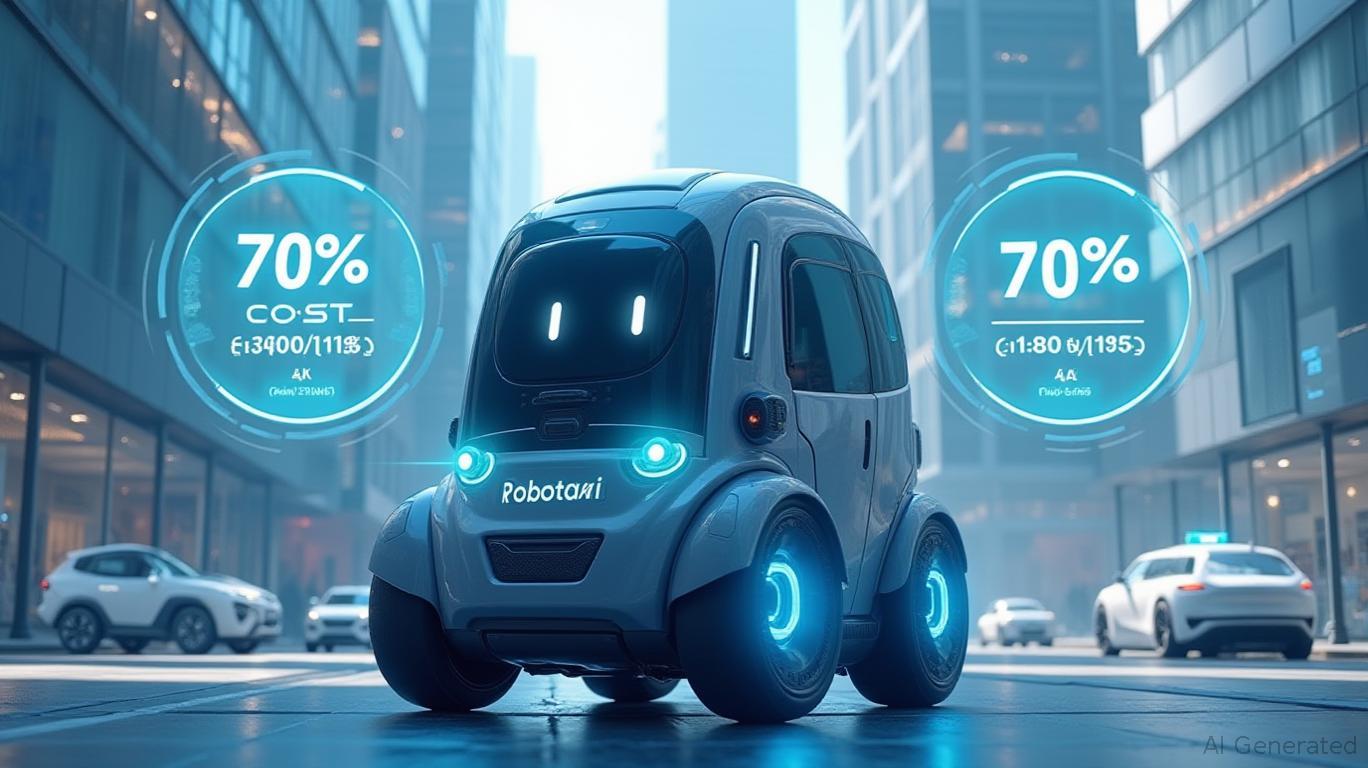Pony.ai's Gen-7 Robotaxi: The Cost-Cutting Catalyst for Autonomous Dominance
Pony.ai's Gen-7 Robotaxi rollout is not just an incremental upgrade—it's a strategic masterstroke that could redefine the economics of autonomous mobility. By slashing bill-of-materials (BOM) costs by 70% compared to its predecessor, the company has created a blueprint for mass production of Level 4 autonomous vehicles (AVs). Pair this with breakthroughs in regulatory approvals, partnerships with automotive giants, and global expansion plans, and Pony.ai emerges as a front-runner in the race to commercialize self-driving taxis. Let's dissect the catalysts behind this transformation and why investors should take note.
The Cost-Cutting Revolution
The 70% BOM reduction is the linchpin of Pony.ai's scalability. This figure, verified through design optimizations and automotive-grade component adoption, breaks down as follows:
- Autonomous Driving Computation (ADC): 80% cheaper than prior generations.
- Solid-State LiDAR: 68% cost reduction, thanks to volume manufacturing and modular design.
- Modular Platform Architecture: Enables seamless adaptation across vehicles, from Robotaxis to future Robotrucks.

This cost efficiency isn't just about hardware. Pony's proprietary PonyWorld simulation platform—generating 10 billion km of virtual testing weekly—has slashed physical testing costs and accelerated software refinement. The result? A system capable of navigating complex urban scenarios, including tunnels and irregular intersections, at a fraction of the cost of earlier models.
The financial impact is clear:
- Robotaxi service revenue surged 200% YoY in Q1 2025, with fare-charging revenue up 800%, driven by expanded operations in China's Tier-1 cities.
- Unit economics are improving: Lower
Regulatory Breakthroughs: A License to Scale
Pony.ai's first-of-its-kind fully driverless commercial license in Shenzhen's Nanshan District is a regulatory milestone. The 2,000-square-km operational zone—20x larger than San Francisco's testing area—provides a real-world proving ground for Gen-7. This approval isn't just about testing; it's a commercial greenlight.
The company's partnership with Shenzhen Xihu, the region's largest taxi operator, underscores its pragmatic approach. Xihu manages fleet operations and compliance, while Pony focuses on tech and scalability. This “asset-light + AI-empowered” model reduces capital risks and accelerates deployment. By year-end 2025, Pony aims to deploy 1,000 Gen-7 Robotaxis, a critical step toward its 2026 profitability target.
Global Ecosystem: Partnerships Powering Dominance
Pony.ai isn't siloed. Its ecosystem of partnerships includes:
- Automakers: Toyota (bZ4X Robotaxi), GAC (Aion V), and BAIC, ensuring access to mass-manufacturing expertise.
- Global Operators: Uber (Middle East/Europe), Singapore's ComfortDelGro, and Luxembourg's government (testing).
- Tech Allies: Tencent (Weixin integration), enabling seamless user acquisition in China.
These alliances de-risk expansion. For example, Uber's network provides instant access to high-demand markets like Dubai, where Pony aims to contribute to the city's 25% autonomous transport target by 2030.
Investment Thesis: Why Pony.ai Deserves a Seat at the Table
The combination of cost efficiency, regulatory momentum, and global partnerships positions Pony.ai to dominate mass production of L4 AVs by 2025. Here's why investors should take notice:
- Scalability at Scale: The Gen-7's modular design and automotive-grade components allow Pony to ramp production without compromising safety or performance.
- Unit Economics Payoff: With BOM costs down 70%, the breakeven point for fleets is achievable faster. Watch for operating margins to improve as the 1,000-vehicle fleet target is met.
- Geographic Expansion: China's urban markets are a $100B+ opportunity, but Pony's global deals (e.g., Middle East, Southeast Asia) open a multi-regional revenue stream.
- Regulatory First-Mover Advantage: Shenzhen's license is a template for approvals in other cities.
Risks to Consider
- Execution Risks: Scaling to 1,000+ vehicles requires flawless manufacturing and software stability.
- Regulatory Hurdles: Global markets may impose stricter safety or insurance requirements.
- Competitor Pressure: Waymo, Cruise, and Baidu are also racing toward cost-effective AVs.
Final Verdict: A Buy on the Horizon
Pony.ai's Gen-7 deployment is a transformative catalyst that aligns cost, regulation, and partnerships to achieve what no AV startup has yet done: profitable scale. While losses persist due to R&D and production investments, the $738.5M cash war chest provides runway to execute.
For investors, Pony.ai offers a compelling bet on the EV/AV convergence—a sector poised for explosive growth as cities urbanize and decarbonize. Watch for milestones like fleet expansion beyond 1,000 units, breakeven in core markets by 2026, and regulatory wins outside China. This is a long-term play, but Pony's execution so far suggests it's ready to lead the autonomous revolution.
Investment Advice: Pony.ai is a hold for now, but a buy on dips once it secures additional regulatory approvals or signs major fleet orders. Monitor cash burn and unit economics closely—success here could make this a decade-defining AV stock. Historically, such earnings-driven buying opportunities have delivered mixed results. A backtest of buying Pony.ai on quarters with YoY revenue growth exceeding 150% and holding for 60 days revealed an average immediate gain of 2.59% on the earnings date, but negligible additional returns over the holding period. This suggests investors should pair this strategy with strict risk management, as prolonged gains require sustained revenue momentum.

Comments
No comments yet